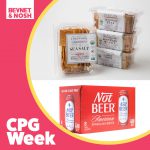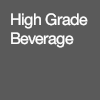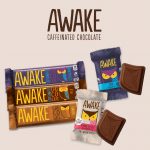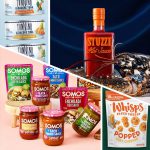Sweet & Snacks: Big Candy Goes For Small Portions, Transparency
Some of candy’s largest companies are adopting a somewhat counterintuitive business strategy. They’re are taking a page from natural brands’ playbooks, and instead of urging consumers to eat more candy, the confection giants are reminding them of the importance of moderation. The move toward transparency recognizes that while candy is “always a treat,” sweets can still fit into a healthy lifestyle.
At this year’s Sweets and Snacks Expo in Chicago, Illinois, Mars Chocolate, Wrigley, Nestlé, Ferrero, Lindt, Ghirardelli, Russell Stover and Ferrara Candy Company highlighted their new pledge to educate consumers about the portions and calorie counts of their treats. The five-year plan, led by the National Confectioners Association (NCA) and Partnership for a Healthier America (PHA), was announced earlier this month.
The NCA and PHA — which describe the initiative as consumer friendly — plan that by 2022, half of the candy sold by the committed brands in the U.S. will come only in sizes that contain 200 calories or less per packaged serving. This commitment will be met through sizing changes and, in some cases, reformulation.
The companies have also committed to print calorie information on the front of their packaging. A third party non-governmental organization, The Hudson Institute, will verify and track each company’s progress.
NCA President John Downs told NOSH the commitment has been in the works for over two years.
“We think consumers will embrace this because they want more choices, and to feel empowered as it relates to what they want to do in managing their sugar intake, as well as reducing their calories for themselves and their families,” he said.
*Listen as Downs talks to NOSH about how the commitment may also benefit brands’ relationships with retailers. (Story continues below)
One notable candy giant missing from the commitment is The Hershey Company, which announced earlier this month its own commitment to clearer packaging and cleaner labels. Downs said Hershey was involved in the NCA’s discussions, but that the company ultimately decided to go ahead with their own initiative that’s “directionally exactly the same place we are headed.”
That’s true — for the most part. Hershey has also committed to its own fourth pillar regarding ingredients and sourcing. Hershey has committed to purchasing 100 percent of all of its cocoa from certified and sustainable sources and announced that by 2020, all of its “everyday chocolate products” will be made with “simple ingredients,” with no artificial preservatives, no artificial flavors, no artificial sweeteners and colors from natural sources.
Mars and Wrigley also committed to remove artificial colors from all of their food and confectionery products globally in 2016. Nestle began its efforts to reduce artificials across its chocolate and sugar brands in 2015. Still, ingredients were not a topic the NCA wanted to address in this industry-wide commitment, according to Downs.
“It would be difficult to try to land on a different pillar of this commitment as it relates to [ingredients] because that is more specifically related to a company’s supply chain so we didn’t have a discussion about that,” Downs said. “We talked about it initially, but we landed in a place where this is better served by each individual company.”
For some brands, the change toward individual packaging and sharing packs will be enough of an investment. According to the NCA, currently, more than 60 percent of the group’s individually wrapped products contain less than 250 calories per pack. But the effort required by each individual company will vary. Mars and Wrigley have already invested $200 million to achieve the new goals, Tracey Massey, President of Mars Chocolate North America, said during a presentation at the Expo.
For others, like the Lindt Group, which owns Ghiradelli and Russell Stover, it’s less of a shift.
“Portion control has been part of Lindt philosophy for a long time,” Andreas Pfluger, President of Lindt North America, told NOSH. “Many of our products under the brands of Lindt, Ghirardelli and Russell Stover are in a little pack and even in our boxes; it’s all small pieces. With our Lindor balls or our Ghirardelli squares or in our Russell Stover boxes, all allow you to say ‘I will have one, two, or as many as you like.’ We’ve always given a little more control in how you indulge in chocolate; we just haven’t always been good about talking about it.”
Sugary foods have come under fire in recent years as a matter of public health. In 2014, the World Health Organization estimated about 41 million children under the age of 5 suffered from weight problems. Sugar taxes on beverages have also emerged. Regardless, consumers are indulging. U.S. Confectionary is a $35 billion industry, and it’s growing. As more people indulge, Christopher Gindlesperger, NCA Vice President of Communications, told NOSH he thinks it’s the industry’s responsibility to give consumers not only options, but also information. That’s why the NCA also launched AlwaysATreat.com as an online home for the initiative’s education platform.
*Listen as Gindlesperger talks to NOSH about the mission behind AlwaysATreat.com. (Story continues below)
Gindlesperger added that the plan is to eventually expand the campaign beyond the website but for now, the brands themselves are committed to marketing the initiative.
Though the NCA and PHA partnership was highly praised during Sweets and Snacks, numerous natural brands told NOSH they would like this to be just the beginning for the candy giants. Transparency and clean labels are trends natural brands have been embracing over the past decade. Lovely Candy Company CEO Mike Nakamura, said when it comes to educating consumers about health, he thinks ingredients are “as important, if not more, than portion control.”
“I think it’s great that this is an initiative in the industry and that the big companies are doing what they are able to do to help get that done.” Nakamura told NOSH. “[But] we can talk about portion control all day long, but if it’s the wrong stuff in the portion then it’s still not the whole story.”













